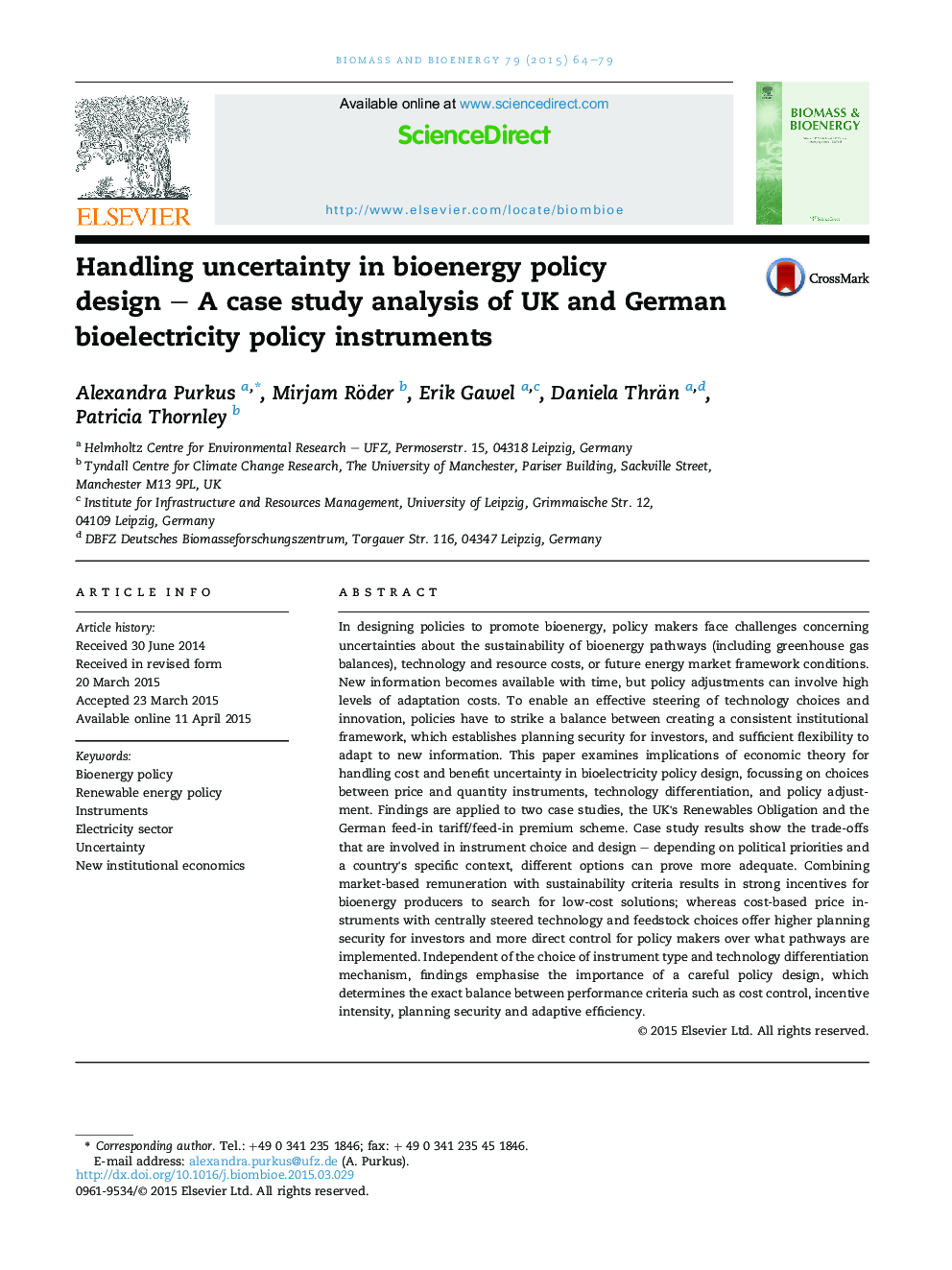| Article ID | Journal | Published Year | Pages | File Type |
|---|---|---|---|---|
| 7063930 | Biomass and Bioenergy | 2015 | 16 Pages |
Abstract
In designing policies to promote bioenergy, policy makers face challenges concerning uncertainties about the sustainability of bioenergy pathways (including greenhouse gas balances), technology and resource costs, or future energy market framework conditions. New information becomes available with time, but policy adjustments can involve high levels of adaptation costs. To enable an effective steering of technology choices and innovation, policies have to strike a balance between creating a consistent institutional framework, which establishes planning security for investors, and sufficient flexibility to adapt to new information. This paper examines implications of economic theory for handling cost and benefit uncertainty in bioelectricity policy design, focussing on choices between price and quantity instruments, technology differentiation, and policy adjustment. Findings are applied to two case studies, the UK's Renewables Obligation and the German feed-in tariff/feed-in premium scheme. Case study results show the trade-offs that are involved in instrument choice and design - depending on political priorities and a country's specific context, different options can prove more adequate. Combining market-based remuneration with sustainability criteria results in strong incentives for bioenergy producers to search for low-cost solutions; whereas cost-based price instruments with centrally steered technology and feedstock choices offer higher planning security for investors and more direct control for policy makers over what pathways are implemented. Independent of the choice of instrument type and technology differentiation mechanism, findings emphasise the importance of a careful policy design, which determines the exact balance between performance criteria such as cost control, incentive intensity, planning security and adaptive efficiency.
Keywords
Related Topics
Physical Sciences and Engineering
Chemical Engineering
Process Chemistry and Technology
Authors
Alexandra Purkus, Mirjam Röder, Erik Gawel, Daniela Thrän, Patricia Thornley,
